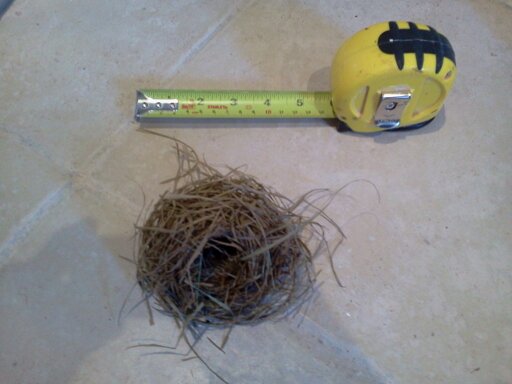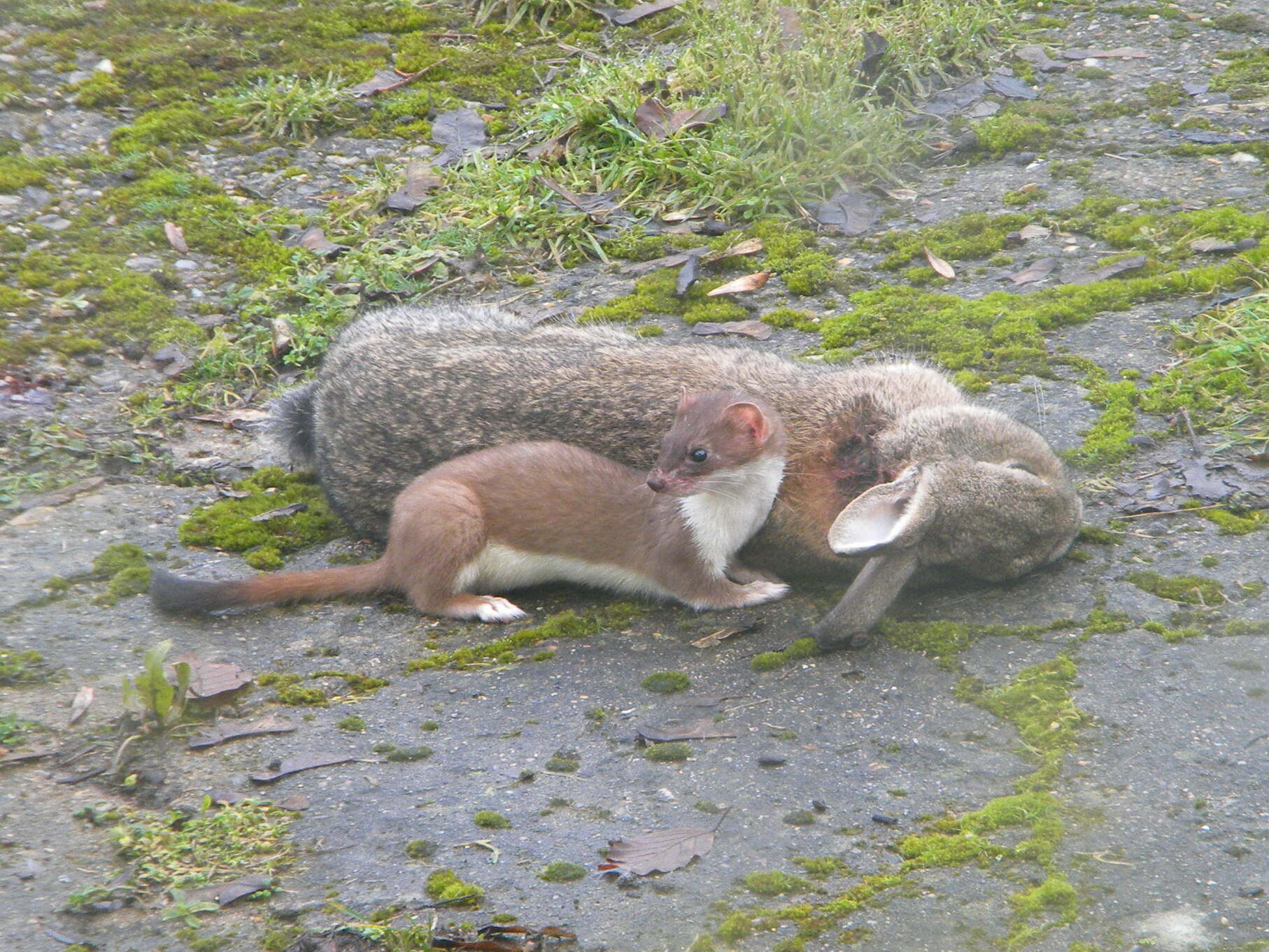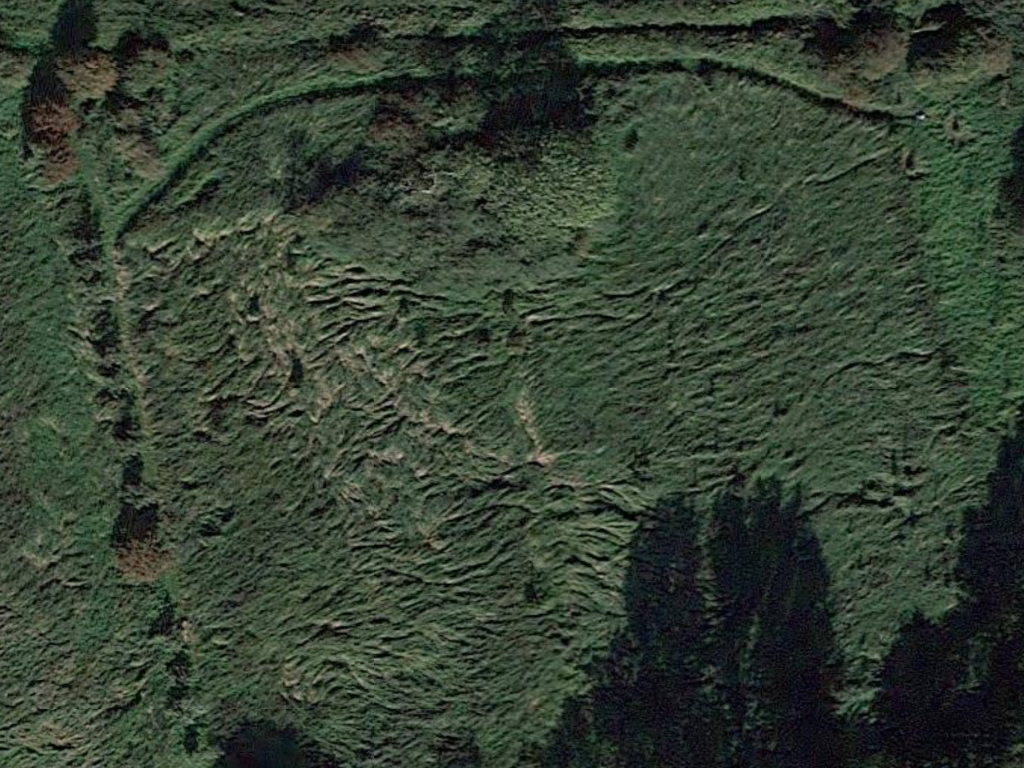Hillside House mammal species list
Listed here are mammals recorded at Hillside House from October 2013 onwards.
As of October 2020, a total of 27 species have now been recorded on the plot.
| species | status/comments |
|---|---|
| hedgehog | [Not yet recorded at H.H. Seen dead on local roads.] |
| common shrew | Present, probably in good numbers. Brought in by cat |
| pygmy shrew | Probably this species (brought in by cat). |
| water shrew | A female brought in by cat 2020-06-12. Identified by large(ish) size, dark brown, almost black (coke-coloured?) upperparts, row(s) of hairs along underside of tail, whitish tufts inside ears. Hind feet fringed with hairs. Underside of muzzle brownish tinged. Five pairs of nipples, quite well round towards flanks, with one pair opposite hind legs. This individual may have come from the main pond, which has been opened up to extra light in recent years. |
| mole | Numerous molehills on grassy areas near Hillside House show the presence of this species on the plot. At times (especially in the summer) emerges above ground and is then vulnerable to predation by cats. |
| Natterer's bat | Recorded June 29th 2017 during NBS session by H.H. pond. The BTO's distribution map for Natterer's bat suggests the species is somewhat more numerous in the west and north-west of Norfolk than in other parts of the county. |
| brown long-eared bat | Recorded April 2016 and in June 2017 during NBS session by H.H. pond, probably permanently present. Sadly, one found dead during work on the shed in 2017. This may, however, indicate that the shed is used for roosting by this species. |
| barbastelle | [Recorded during NBS session near to H.H., on the Wensum Pools site. Not yet at H.H.] |
| common pipistrelle | Recorded April 2016 during NBS session by H.H. pond, probably permanently present. |
| soprano pipistrelle | Recorded April 2016 during NBS session by H.H. pond, perhaps permanently present. |
| serotine | Recorded June 29th 2017 during NBS session by H.H. pond. The BTO's distribution map for this species within Norfolk shows quite a strong tendency for records to be concentrated in a band from the Thetford area northwards to the coast, with scattered centres elsewhere in the county. |
| noctule | [Recorded during NBS session near to H.H. close to Norman's Burrow Wood. Not yet at H.H.] [A large bat seen over the plot and nearby 26/04/2020 may have been this species, but serotine is also quite large.] |
| rabbit | Like several other mammals, the rabbit is an ancient introduction into the UK. Present round the Hillside House plot. Few plants can be grown in the area of South Raynham without protection against rabbits -- suitable counter-measures are wire-netting or mesh guards. Damage occurs especially in cold weather in winter. For example young laurel plants survived untouched to about mid-November 2014 but were then effectively destroyed in a period of about a week. Fortunately rabbits seem to show little interest in Cistus, rosemary, pines (Pinus spp.) and yew. However they attack the bark of some deciduous trees near the base of the main stems. They may have killed some young trees such as elms near the plot in this way. Rabbits form an important item in the diet of some mammalian predators on the plot. |
| brown hare |  A juvenile killed probably by a stoat by the yew hedge 2021-09-25. Mainly absent from plot, but occurs within a few hundred metres of H.H. in fair numbers, on larger arable fields. |
| grey squirrel | Present all-year round. This invasive species was intentionally introduced from north America in the late 19th century, before the damaging effects of alien species had been appreciated. Fifty years ago grey squirrel was scarce in Norfolk but now is widespread, having essentially replaced red squirrel. (Red squirrel was still present in south Norfolk and north Suffolk in the 1970s.) Recent research at Imperial College has shown that the spread of grey squirrel has been assisted by people translocating them, at times apparently by accident. |
| bank vole | Abundant. A main prey of tawny and barn owls, which hunt in H.H. garden. |
| water vole | A probable (above-ground) water vole nest was accidentally hauled up with detritus from the Carr Stream January 2017. |
| short-tailed vole | Present on the meadow, also near the pond, probably common. Nests are often found during scything work. |
| harvest mouse |  Harvest mouse Micromys minutus is present on the meadow mainly in areas of vigorous reed. A record has been submitted to the Mammal Society. During winter 2022/23 old summer nests were found at Top Blackthorn (on the meadow) and in a cut reed area on the west side of the meadow. Also found was a winter nest very close to the ground with extra moss insulation layers surrounding it. Six or seven nests were found during scything work on the meadow in autumn 2014 (see photo: the diameter of the nest shown was about 11 cm). The nests were around 30 to 40 cm off the ground in reeds and other rank vegetation. (Vole nests are usually on the ground or just below it). Some more nests were found in 2015 and 2016. Harvest mouse was once common in lowland England and Wales but has declined since harvesting was mechanised. (Like several other British mammals, harvest mouse is probably an ancient introduction, and this particular species may have originated in the far east.). |
| woodmouse | 1 seen 2015, also 1 caught by cat |
| brown rat | One on concrete by shed 06/11/2016, feeding on bird seed. Also recorded by trailcam at various times under bird feeders. A juvenile brought in by cat. |
| red fox | Scats found on the meadow etc 2014, 2015. Persecuted in East Anglia. |
| badger | One dead on A1065 road 300 metres from plot, towards East Raynham (opposite Horseshoe Plantation). Another dead on A1065 15/05/2017, this time near to Wensum Pools. Tracks are sometimes found on the meadow. |
| stoat |  Appears erratically, perhaps present all year. The main prey of this species here seems to be rabbits, though rodents and other small mammals are also taken. Also recorded as prey are woodpigeon and stock dove. |
| weasel | Appears erratically, possibly present all year. One spent around 100 minutes in the vicinity of H.H. kitchen 08/03/2015. Carried two rodents (probably bank voles) to a possible nest nearby. |
| otter | A single record on the Carr Stream, 2018-03-28. |
| muntjac | Present in nearby woodland and seen quite frequently, usually on the meadow, also in Hillside House garden. This is another introduced mammal species, originating from Woburn in the 20th century. A pregnant female was seen to eat several plant species in 2021, including yew (hedge), bluebells and red campion. |
| roe deer |  Occurs erratically, usually on the meadow, also in H.H. garden. Google Earth images show damage in reedbeds on the meadow caused by deer in the summer, most likely by roe deer or muntjac. Acrocephalus warbler nests are therefore at serious risk of being destroyed and efforts to keep the deer out of the meadow are underway. At the time the Google Earth pictures were taken (probably autumn 2017), deer were coming on to the meadow from the east, via at least three distinct paths. Fences installed by Raynham Estate make this less likely now but muntjac and roe deer tracks are still to be seen on paths. |
| red deer | [Five near Mill Covert in summer 2020, not yet on plot.] |
| fallow deer | [At least one record close to plot.] |
| Chinese water deer | Female recorded by trailcam on track near Top Blackthorn 2024. |
| Homo sapiens | One adult usually present on the plot. |
